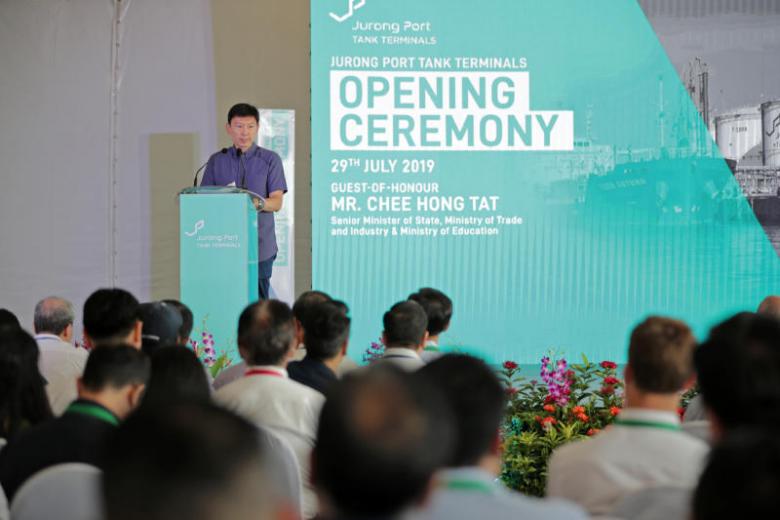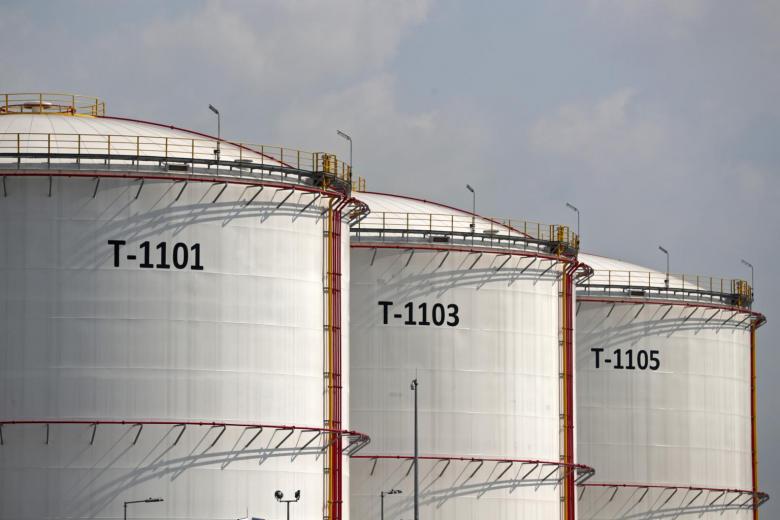SINGAPORE - A new storage facility at Jurong Port will strengthen Singapore's position as one of the world's top bunkering ports for low-sulphur fuels, said Senior Minister of State for Trade and Industry Chee Hong Tat on Monday (July 29)
Called Jurong Port Tank Terminals (JPTT), the 16ha facility can store up to 252,000 cubic metres of clean, low-sulphur petroleum.
The official opening of its first phase on Monday comes ahead of the International Maritime Organisation's worldwide ban on ships using fuels containing more than 0.5 per cent sulphur, in a move to help reduce maritime pollution.
The terminals, a joint venture between port operator Jurong Port and German firm Oiltanking, cost $140 million, excluding the cost of such infrastructure as berths and jetty lines.
Speaking at the opening, Mr Chee said the facility was purpose-built to handle clean petroleum products, with features such as dedicated clean storage capacity as well as dedicated tank inlet and outlet lines to prevent contamination.
He added that JPTT's deep-water berths and dedicated jetties allow it to receive Suezmax-sized vessels which offer economies of scale when transporting liquid bulk cargo. These vessels are large tankers that can carry about 160,000 tonnes and transit through the Suez Canal.
Meanwhile, a direct pipeline to Jurong Island's petroleum and petrochemical network allows companies to save up to 30 per cent in transport and handling costs when compared to the use of vessels.
Jurong Port chief executive officer Ooi Boon Hoe said JPTT, which has been partly operational since April, has received, blended and discharged more than one million tonnes of product since then.
Mr Ooi, who is also JPTT's chairman, announced that Petrochina is JPPT's first customer, taking up all of the tank capacity in the facility's first phase.
The Chinese oil and gas giant, which has a market value of US$169 billion, is the owner of local petroleum company SPC.
The second phase of the facility is expected to add another 310,000 cubic metres of clean petroleum storage, bringing JPTT's total storage capacity to 562,000 cubic metres.
Jurong Port is in "deep discussions" on the second phase, Mr Ooi said, without giving a timeline for its completion.
Said Mr Chee: "Jurong Port's ability to continually innovate and create value for its customers will play a crucial role in ensuring that Singapore remains competitive in attracting strong investments from key players across various industries, and creating good jobs for our workers."



